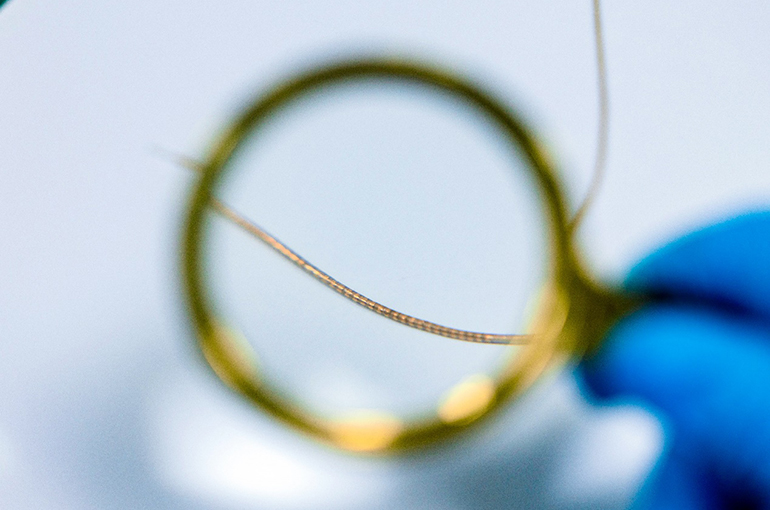 Chinese Scientists Create Flexible Electrode for Next-Gen Brain Implants
Chinese Scientists Create Flexible Electrode for Next-Gen Brain Implants(Yicai) Sept. 25 -- Chinese scientists have developed a mobile, durable brain-computer interface sensor that can be steered wirelessly, marking a breakthrough from traditional fixed sensors with limited lifespans that have constrained the broader application of neural interfaces.
Researchers from the Shenzhen Institute of Advanced Technology under the Chinese Academy of Sciences and Shanghai’s Donghua University created the electrode, named NeuroWorm, according to a recent study published in Nature.
Electrodes serve as the core sensors linking electronic devices with the nervous system in BCIs, a growing field with potential applications such as controlling robotic limbs or managing neurological conditions like Parkinson’s disease. Existing electrodes are typically fixed in place, often triggering immune responses and experiencing signal degradation over time.
To overcome these limitations, the team engineered a two-dimensional array on an ultrathin flexible polymer into a fiber about 200 micrometers in diameter. NeuroWorm features up to 60 independent signal channels, functioning as a high-capacity sensory interface. A small magnetic module at the fiber’s tip enables wireless navigation within brain or muscle tissue, allowing it to record high-quality spatiotemporal signals along its path.
This design enables noninvasive repositioning of implants using magnetic guidance, potentially eliminating the need for repeat surgeries, the researchers said. They described NeuroWorm as a softer, smarter, and less invasive platform for long-term, multisite neural monitoring, with potential applications in BCIs, smart prosthetics, epilepsy mapping, and chronic neurological disease management.
To test NeuroWorm’s mobility in muscle fascia, the researchers implanted it in a rat’s leg muscle for over 43 weeks, during which it continuously recorded electromyographic signals. They also guided the sensor through a rabbit’s brain, navigating from the cortex to subcortical regions while capturing high-quality neural signals.
These trials demonstrated the device’s strong biocompatibility and long-term stability, the team noted.
Editor: Emmi Laine